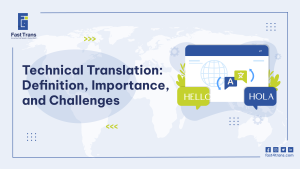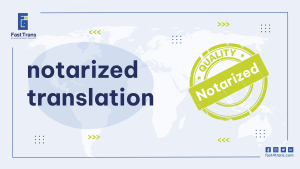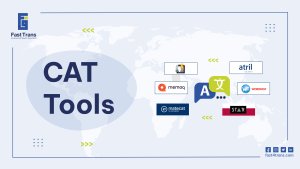Arabic Product Localization Strategy is the art of tailoring your product to the cultural, linguistic, and technical preferences of Arabic-speaking markets, ensuring a seamless user experience. Beyond translating text, it involves adapting designs, adjusting user interfaces, and aligning with local customs, all of which build trust, foster loyalty, and boost SEO.
By speaking directly to the cultural and linguistic needs of the audience, businesses can expand their customer base, enhance engagement, and drive sales, ultimately paving the way for long-term success in Arabic-speaking regions.
What is Arabic product localization?
Arabic product localization is a broad process that includes translating, designing, testing, and engineering the product to fit the specific cultural, linguistic, and technical needs of Arabic-speaking audiences, with the goal of ensuring an optimal user experience.
What are the key benefits of Arabic Product Localization Strategy?
Arabic product localization enhances user accessibility by breaking language barriers, improving UX design, and building trust with Arabic-speaking audiences. It also boosts SEO performance, expands the customer base, and drives higher sales.
1. Transcending language barriers
Language is a significant barrier to making your product accessible, especially in Arabic-speaking markets. Translation and localization are essential to breaking down this barrier. While many people in Western countries may assume that a large portion of the population speaks English, only 27% of the world speaks English, with about 1500 million speakers.
If you’re targeting Arabic-speaking regions, localizing your product into Arabic ensures that you cater to one of the most widely spoken languages in the world, making your product accessible to a much broader audience.
2. Taking UX to the next level
User experience (UX) revolves around questions like, ‘Is the product easy to use?’ and ‘Is it familiar?’ Arabic product localization goes beyond just translating text—it involves adapting product design and functionality to suit the Arabic-speaking audience.
By considering cultural preferences and local design expectations, Arabic localization can greatly enhance the product’s user-friendliness, ensuring it resonates with users in Arabic-speaking regions.
This is mentioned in more depth in our article Software Localization Complete Guide
Which by effect…
3. Builds the trust of your audience
Localization is often perceived by users as a sign of respect, and this is crucial when it comes to gaining the trust of Arabic-speaking customers. When your product is tailored to meet their cultural preferences and needs, it shows that you’ve put thought into understanding their unique context. This builds credibility and ensures that users feel more connected to your brand, which is essential for long-term success.
Many products that fail to consider cultural nuances struggle to establish this level of trust, but when done right, Arabic localization fosters customer loyalty.
4. And of course…it’s good for SEO
Localization is crucial for appearing in local search results. In Arabic-speaking regions, including relevant local terminology will increase your chances of being found in search queries. For instance, a recruitment software product that is localized in Arabic will perform much better in countries like Saudi Arabia than an English-only version.
Speaking the language of your target market makes you more visible online, improving your reach and visibility in regional search engines.
Relevant to this is: Digital Marketing Localization Benefits
5. Capture the intention of more customers (increase in customer base)
When your product feels locally relevant and speaks directly to Arabic-speaking consumers, you significantly expand your potential customer base. Arabic product localization shows that you understand the culture, language, and specific needs of your audience, making your product feel like it’s tailored just for them.
As a result, more customers are likely to engage with and trust your product, expanding your fanbase.
6. More Sales!
Investing in Arabic product localization is not just about creating a familiar experience for your users—it’s also about driving tangible results. Localization helps to make your product feel trustworthy and relevant, which can directly boost sales.
When more people connect with your product in their own language and cultural context, you’re likely to see an increase in conversions and overall sales, making the return on investment (ROI) for localization significant.
The different approaches to Arabic Product Localization Strategy
Arabic product localization requires adjusting content, visuals, and UI to reflect cultural, linguistic, and technical differences, ensuring relevance and ease of use. Key elements include cultural sensitivity, right-to-left text, and localized features like currency and date formats.
1. Cultural Localization
In Arabic product localization, many elements need to be adjusted to resonate with the target Arab culture. This includes not only visuals but also content and messaging, ensuring they align with cultural values and sensitivities.
For example, if your product is targeting an Arab Muslim audience, you might want to change visuals to feature traditional clothing, culturally significant symbols, and colors that hold positive connotations. It’s also important to avoid imagery or language that could be deemed sensitive or offensive within Arab societies.
Spotify, as an example, showcases effective cultural localization. It has tailored music charts to cater to the tastes of local Arabic-speaking audiences and celebrates Arab holidays. Despite occasional issues with user experience, Spotify’s efforts to align its content with regional preferences show the importance of cultural adaptation in the Arab market.
2. Linguistic Localization
Linguistic localization focuses on translating textual elements to Arabic. This is more than just text translation—it involves adjusting for right-to-left (RTL) text direction, which is a key consideration in Arabic localization. Additionally, product content such as images with text, and in some cases, cultural references within the language, should be modified to ensure clarity and relevance to Arabic-speaking users.
3. Technical Localization
Technical localization for Arabic products involves adapting the user interface (UI) and digital aspects of the product to suit local preferences and technical requirements.
For Arabic localization, key UI elements that need attention include:
- Currency: Convert to local currencies like the Saudi Riyal or Egyptian Pound.
- Units of Measurement: Ensure that units are in line with regional standards (e.g., kilometers vs miles).
- Date Formats: Use the Arabic format (Day/Month/Year) and be mindful of Islamic calendar dates when relevant.
- Text Direction: Arabic is written from right to left, so UI elements must support RTL scripts.
- Text Expansion and Truncation: Arabic text can be longer than its English counterparts, so UI design must accommodate this without cutting off or distorting text.
- Optimizing for Mobile and Desktop: With high mobile usage in the Arab world, ensuring the product works seamlessly across both mobile and desktop platforms is crucial.
- Local Character Sets: Arabic characters require proper support, ensuring they are displayed correctly across all platforms and devices.
How does Arabic Product Localization work?
Arabic product localization involves adapting design, language, and content to align with cultural norms for Arabic-speaking users. This process includes UX/UI designers optimizing interfaces and visuals, translators ensuring accurate and emotionally resonant translations, and specialists overseeing the integration of culturally relevant elements.
1. UX Designers
They focus on creating a user experience that feels natural to the Arabic-speaking audience. They consider factors like right-to-left text flow and cultural relevance. Tools like Sketch are used to design interfaces that are intuitive and culturally appropriate for Arabic users.
2. UI Designers
Responsible for the visual aspects of the product, UI designers adapt colors, icons, and layouts to align with Arabic cultural aesthetics and expectations. For instance, they ensure that visual elements like icons or images resonate well with local traditions and preferences. Tools such as Adobe XD and InVision are commonly used for UI design, allowing designers to prototype and refine visual elements that appeal to Arabic cultural tastes.
3. Translators and Transcreators
While translators focus on accurately converting content from one language to Arabic, transcreators go a step further by adapting the content to ensure it carries the same emotional impact as the original, while also being culturally relevant. For example, humor, idioms, or references may need to be adapted to suit Arabic-speaking audiences. They use translation management systems (TMS) like SDL Trados or memoQ, and computer-assisted translation (CAT) tools to maintain consistency and quality across Arabic dialects and regions.
4. Localization Specialists
These experts oversee the entire Arabic localization process, ensuring that all aspects—from language nuances to cultural context and regulatory compliance—are handled correctly. They also ensure the product aligns with Arabic linguistic and cultural norms. Localization specialists make use of various translation and localization tools to streamline the process, maintain consistency, and ensure the final product resonates with Arabic-speaking users. Additionally, they keep other team members in the loop to ensure a smooth integration of localized content.
The Typical Process of Arabic Product Localization
Arabic product localization involves market research to understand cultural nuances, followed by content adaptation, design adjustments for right-to-left text, and rigorous testing for functionality. The process concludes with a final review to ensure the product aligns with local linguistic and cultural needs before launch.
1. Market Research
Before anything else, the team conducts thorough research to understand the target market’s cultural nuances, language, and consumer behavior. This is especially important when localizing for Arabic-speaking regions, as each country or region may have unique cultural expectations, preferences, and dialects. Research ensures that the product is aligned with local customs and effectively resonates with the target audience.
2. Content Extraction and Translation
The content to be localized is extracted from the product, whether it’s text, images, or videos. Translators and transcreators then adapt this content for the local audience, ensuring it fits the Arabic language and cultural context. The team must pay special attention to the right-to-left (RTL) text direction, cultural sensitivities, and the choice of appropriate dialects or Modern Standard Arabic (MSA), depending on the market.
3. Design Adaptation
UX and UI designers step in to adjust the product’s design if needed. Arabic is a right-to-left language, so designers must adjust elements such as navigation, menus, and text alignment to accommodate RTL formatting. Things like text truncation and expansion are very likely to occur in Arabic, so designers collaborate closely with translators to ensure that the design supports the Arabic content without breaking the layout.
4. Integration and Testing
Once the content and design are localized, everything is integrated back into the product. The team then conducts thorough testing, using localization testing tools to ensure that all aspects of the product function correctly in the Arabic-speaking market. Testing includes verifying text display, navigation, and technical functionality in Arabic environments, and checking for any layout or linguistic issues specific to the language.
5. Final Review and Launch
After testing, the product undergoes a final review to catch any last-minute issues. During this phase, the team ensures that the final localized version meets all linguistic and cultural requirements for the Arabic-speaking audience. Once everything is approved, the localized product is ready for launch in the target Arabic market. Voila!
Internationalization: Making your product ready for localization
If the product in question is software, then we need to talk about this big word… Internationalization.
Before diving into localization, it’s crucial to prepare your product through a process called internationalization (often abbreviated as i18n).
It’s basically like building a flexible base structure for the software to allow a smooth localization in any language in the future.
What Does Internationalization Involve?
- Flexible Design and Architecture
- Separation of Content from Source Code
- Using Unicode to Support for Multiple Character Sets: including non-Latin scripts like Arabic, Chinese, or Cyrillic.
- Creating an adaptable User Interface with responsive Layouts
- Including Language Selection Feature: This basically allows users to choose their desired language from a drop-down menu on the software/product.
- Ensuring it follows Legal and Regulatory Considerations in each country. In Europe, it will watch for GDPR.
How to get a professional Arabic Product Localization Strategy
To develop a professional Arabic product localization strategy, it’s essential to work with a team that understands both the linguistic and cultural intricacies of the Arab world. A successful strategy involves more than just translating text; it requires adapting your product to the local market, ensuring it resonates with Arabic-speaking consumers.
Fast Trans, a leading company in Arabic product localization, offers expert services that go beyond basic translation. Their team of native Arabic linguists and localization specialists ensures your product is culturally relevant, with an emphasis on dialect preferences, design adaptation, and high-quality content. Fast Trans uses a meticulous, tailored approach to guarantee your product not only speaks the language but also aligns perfectly with local values, customs, and consumer expectations.
Whether you’re entering the Gulf, Levant, or North African markets, Fast Trans can help you create a seamless, professional localization strategy that will ensure your product’s success in the Arabic-speaking world.
Conclusion
Arabic Product Localization Strategy involves adapting a product to meet the cultural, linguistic, and technical needs of Arabic-speaking markets. This process includes translation, design modifications, and ensuring functionality aligns with local expectations, such as adjusting user interfaces and ensuring right-to-left text formatting. By localizing a product, businesses can break language barriers and create a more accessible and familiar user experience, which is essential for enhancing customer satisfaction and engagement in Arabic-speaking regions.
The benefits of Arabic product localization extend beyond simply translating content. It builds trust with the audience by showing respect for their cultural values and preferences, fostering customer loyalty. Localization also boosts SEO performance by improving visibility in regional search engines. Additionally, it helps businesses expand their customer base, leading to increased sales. A well-executed Arabic localization strategy, with adjustments in cultural, linguistic, and technical aspects, is key to successfully entering and thriving in Arabic-speaking markets.











